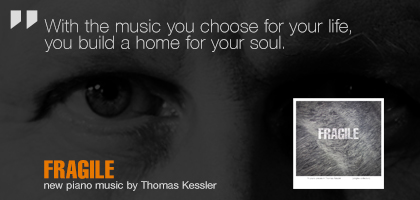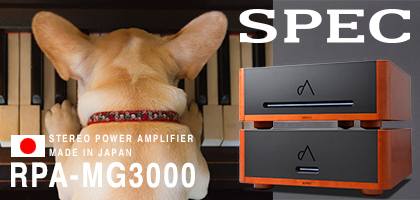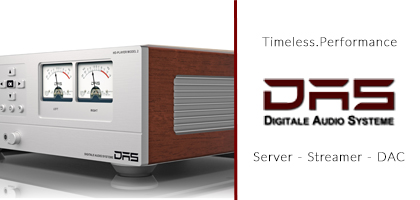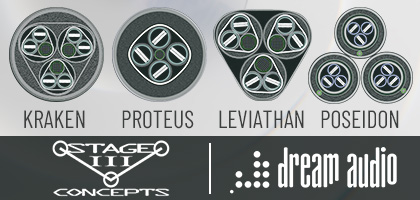No. 239 April 2024
- COVER REVIEW: Muarah MT-3 & MY-1/9 ⸜ turntable & tonearm » POLAND
- KRAKOW SONIC SOCIETY ⸜ meeting № 145: POLSKIE NAGRANIA (Polish Recordings label) on SACD, with Damian Lipiński onboard » POLAND/Kraków
- REVIEW: Carbide Audio CARBIDE BASE ⸜ anti-vibration feet » USA
- REVIEW: Fezz Audio EQUINOX EVO ⸜ digital-to-analog converter » POLAND
- REVIEW: Marton OPUSCULUM OMNI V1.0 ⸜ integrated amplifier » POLAND
- REVIEW: Norma Audio Electronics REVO IPA-80 ⸜ integrated amplifier » ITALY


|

|
|
THE AUTUMN OF COMPACT DISC Or shortly about Billie Eilish and her Mini LP 7-inch Compact Disc

| A few numbers< At the beginning of January this year, the Recording Industry Association of America, better known by the abbreviation RIAA, announced the results of music sales for the first half of 2019. The title of the news that we posted then leaves no doubt as to the state of affairs: According to RIAA, as much as 80% of the US music market is streaming!" (full document in PDF is HERE, accessed: 1.03.2020). This was to be expected, because it follows the logic of the market. The thing that surprised me was the information on the sale of physical media, primarily regarding the ratio of Compact Discs and LPs sold. As we wrote, net revenues from physical products broke the downward sales trend and increased by 5%, to USD 485 million, except that this increase was due to a reduction in physical returns from the product. Therefore, if we counted gross sales in this period, revenues from the physical product would be lower than a year ago. Vinyl sales increased by 13%, to $ 224 million, but they still accounted for only 4% of the industry's total revenues in the first half of 2019. Revenues from sales of physical products accounted for 9% of the entire industry during this period. 
To clarify the situation, I will quote some more data, this time provided by the British Phonographic Industry (BPI), also at the beginning of this year. According to official data, in 2019, 4.3 million vinyl records were sold in the United Kingdom, and year-on-year growth was 4.1% (more HERE). Is that a lot? In truth, it's less than nothing. For comparison, let's say that in 1927, between 104 and 106 million (!) Shellac records were sold in the United States alone. 106 000 000! And later it only got better. Paul Sinclair is right when he says: "Music media seems to be obsessed with bending the narrative - and bending the knee - before the new "king" of formats: VINYL (FORMAT WARS. How the Compact Disc Endures and the Myth of the Vinyl Revival, accessed: 27.01.2020). For comparison, let's say that in 2019, 23.5 million CDs were sold in Great Britain. The decrease is significant, 26.5% compared to 2018, but it is still a good result. 
But where I’m getting to with it: the decline in CD sales is slowing down, and the increase in sales of LPs is rather symbolic and also stopped abruptly. For the sake of clarity - I love vinyl, I appreciate its advantages and I am glad that it managed to get young people interested again. But you also need to know that this is a kind of cultural phenomenon, not a "return of the king". | Mini LP 7-inch Compact Disc In comparison, the situation with the Compact Disc seems quite stable. For us audiophiles it has another dimension - I think it is the best (next to SACD) music carrier. It gives way to vinyl, but not always and only when it comes to old recordings. Contemporary LP - apart from exceptions, such as those published by Adam Czerwiński - is a "black box" where everything can be stored, even an mp3 file. That is why I was very happy about to learn that the Japanese branch of Universal Music Company decided to release the album BILLIE EILISH entitled When We All Fall Asleep, Where Do We Go?, which we have awarded the Best Recording 2019 Award. The album was mixed by Rob Kinelski (e.g. Beyoncé, Toni Braxton, U2), and John Greenham (Queensrÿche, Omar Sosa, Wishbone Ash) is responsible for its mastering. 
Writing these words, I listen to the information provided by RMF.fm radio: Finneas O'Connell responsible for the composition and recording and his sister Billie Eilish (Billie Eilish Pirate Baird O'Connell), who wrote the lyrics, won as many as four Grammy Awards for 2020, including the most important one, the Record from the Year. For an 18-year-old singer and 22-year-old composer and producer, this feat is simply incredible. Let's add that the duo will write the opening song to the new Bond ... But let's get back to the Japanese release. The Eilish album was released in Japan by Universal Music LCC as "mini LP 7-inch" (7"). So we got a reduced version of the vinyl with the cover in the size of a 7" vinyl single (the disc itself is a standard CD). The reception of such a release is completely different to that of a classic CD. |
I hold something real and tangible in my hands. Seven inches is a size large enough that the graphics on the cover - an amazing, "uncomfortable" photo of the artist - makes a huge impression. The mini LP format recalls the LP, but without its weight and size. This is how all CDs released in the 21st century could look like for me. For the first time, we got CDs in the "mini LP 7-inch" format - if I remember correctly - in 2014 and they were Japanese reissues of Banco de Gaya albums. Janusz, the host of meetings of the Krakow Sonic Society, bought them. When he showed them to us, we were truly impressed. That was it! For the first time I didn't have the impression that I was missing something in comparison to the LP, because the sound was exceptionally good and the graphics large enough to see everything that the artist intended to show us. 
After this debut, we were quickly offered more releases of this type, with King Crimson and Emerson, Lake and Palmer (Platinum SHM-CDs) boxes and Yes discography (on SACDs) to name few most prominent ones. Subsequent re-editions brought the albums of Billy Joel, The Rolling Stones, The Who, Beck, Santana and others. There are not many of them, but there is plenty to choose from. The latest addition to this collection is the beautiful reissue of the Miles Davis album Live Evil (in SACD version with quadraphonic mix). And now - there will not be many such releases. It turns out that for a "normal" man they are bizarre. One of my friends, seeing the Eilish disc, simply asked "what is this?" Therefore, I think, it will remain a niche publishing form intended for the audiophile market. So why did they release the When We All Fall Asleep, Where Do We Go? in this form? I think the record label is only exploring the mainstream market in this way. First they released a fantastic-looking Tailor Swift disc titled Lover, and now Billie Eilish’s. And the sales results will probably determine the decisions that sales directors make - whether they decide to promote the 7-inch CD format or leave it alone. | Digital Whatever the case, the vinyl will stay with us as a symbol of "analogue" world. We have already talked many times about how fragile this definition is in the 21st century. Starting from 1971, when the first LP with digitally recorded material was released, we do not know exactly what we get on the black disc. All the more so because for musicians the use of analog and digital instruments, as well as recording using analog and digital recorders for the same disc, are now something natural and they combine these techniques in order to achieve an intended artistic effect. 
I approach artists such as the O'Connell siblings with all the more respect. Their album is an example of how to combine contemporary trends of popular music with almost punk, anarchizing aesthetics and to achieve an incredibly good sound. Listen to the Bad Guy, the song for which they received one of the Grammy Awards, and you will see how perfectly a fully digital recording can sound from a CD. Beautiful, low bass, clear vocals that are quiet at the same time, that are almost melorecitation. And these sounstage! It's hard to believe that this is an album recorded in such a way. The whole was created in Finneas O'Connell's bedroom. It's a tiny room, with synthesizer keyboards in one corner and a sofa against the other wall - Billie was singing while sitting on that sofa. Finneas told Pro Sound News that the "bedroom has very specific sound, very "tight" and intimate, close and quiet ". He adds that he "loves the way it makes the vocals sound" (accessed: 27.01.2020). The next album is to be recorded in his new home, but he wants to record vocals in the same place again. This is a classic recording for modern music releases and it is referred to as "constructed". It was created entirely in the Apple Logic Pro X computer with Universal Audio Apollo 8 interface and cheap subwoofer supported Yamaha HS5 speakers. All instruments that we hear on the disc are digital, obtained mainly by the Keyscape program from Spectrasonics. 
The only element recorded "live" was the vocals. The Vocal Transformer software plug-in is responsible for its unusual sound. Finneas used two microphones to record. Initially, with the songs Ocean Eyes, Six Feet Under and Bellyache it was Audio-Technica AT2020, and then the large membrane Neumann TLM 103, which the musician praised a lot. | Another format war? Paul Sinclair, editor-in-chief of the „SuperDeluxeEdition” magazine, in his article on myths about LP sales, points out that the audio industry has led to a "self-fulfilling prophecy". By promoting the sale of vinyl records, where it earns much more, it pushes the CD format out of the market. And yet, if you look at it without emotions, it's a mistake. CD is the only format that allows artists still to make reasonable money. Income from streaming is a joke, except for the biggest stars. Therefore, Compact Discs sold during concerts constitute an important part of the budget of most bands. If publishers manage to convince people that the CD is passe, then they will lose one of the sources of income. For me it would also be a failure of one of the most successful experiments in music history. It began with a failure - the CDs sounded so bad in the first years that I can't believe that music lovers got rid of vinyl. However, its autumn is brilliant. CDs (and even more so SACDs) sound better to me than any file, no matter how "hi-res". And, I suppose, it will only improve, because as technology develops, we understand the nature of digital recording and playback better and better. And if the Compact Disc will sound and look like the When We All Fall Asleep, Where Do We Go? in the "MINI LP 7-INCH" version I need not to worry about the future of the format. ■ WOJCIECH PACUŁA | chief editor | Post Scriptum |
About Us |
We cooperate |
Patrons |
|
Our reviewers regularly contribute to “Enjoy the Music.com”, “Positive-Feedback.com”, “HiFiStatement.net” and “Hi-Fi Choice & Home Cinema. Edycja Polska” . "High Fidelity" is a monthly magazine dedicated to high quality sound. It has been published since May 1st, 2004. Up until October 2008, the magazine was called "High Fidelity OnLine", but since November 2008 it has been registered under the new title. "High Fidelity" is an online magazine, i.e. it is only published on the web. For the last few years it has been published both in Polish and in English. Thanks to our English section, the magazine has now a worldwide reach - statistics show that we have readers from almost every country in the world. Once a year, we prepare a printed edition of one of reviews published online. This unique, limited collector's edition is given to the visitors of the Audio Show in Warsaw, Poland, held in November of each year. For years, "High Fidelity" has been cooperating with other audio magazines, including “Enjoy the Music.com” and “Positive-Feedback.com” in the U.S. and “HiFiStatement.net” in Germany. Our reviews have also been published by “6moons.com”. You can contact any of our contributors by clicking his email address on our CONTACT page. |




 |
     |
main page | archive | contact | kts
© 2009 HighFidelity, design by PikselStudio,
projektowanie stron www: Indecity







 ne must honestly say that the vinyl record came back in a way no one would expect from it. People talk about it, write, show it in movies, TV series and commercials. It can be said that it became part of the iconography of the second decade of the 21st century. It is surprising how this situation was created - I would even say that it was "inflated". In fact, the "return" of a vinyl record is nothing other than a "vinyl bubble" that must burst sooner or later.
ne must honestly say that the vinyl record came back in a way no one would expect from it. People talk about it, write, show it in movies, TV series and commercials. It can be said that it became part of the iconography of the second decade of the 21st century. It is surprising how this situation was created - I would even say that it was "inflated". In fact, the "return" of a vinyl record is nothing other than a "vinyl bubble" that must burst sooner or later.


